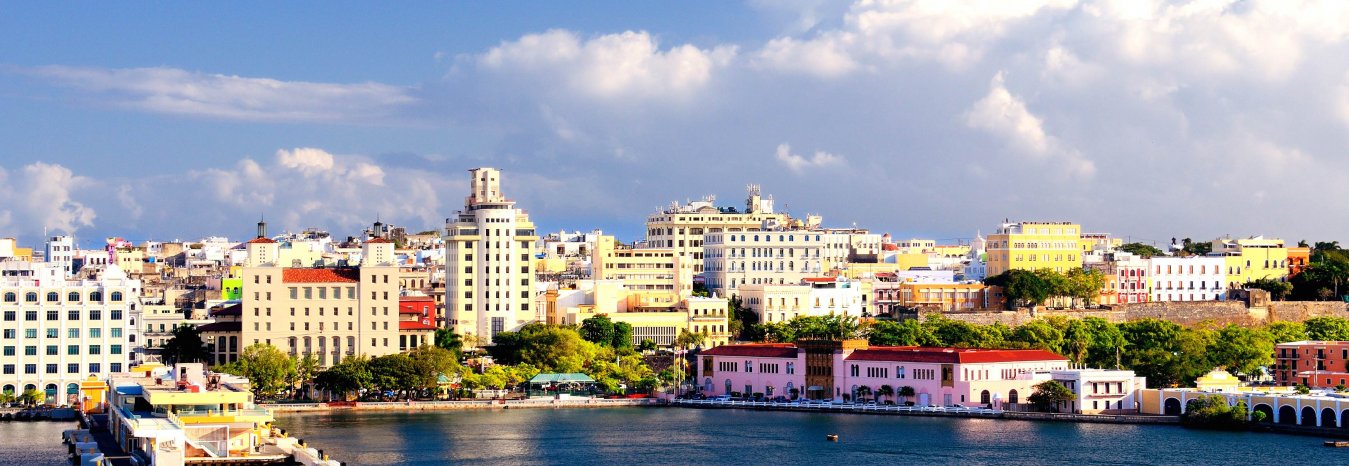
Puerto Rico is an unincorporated US territory in the Caribbean with a mountainous landscape, waterfalls and the El Yunque tropical rainforest. Its capital and largest city, San Juan, the Isla Verde area is known for its hotel strip, casinos and beach bars. The Old San Juan district features bright-coloured Spanish colonial architectures and El Morro and La Fortaleza, massive, ancient forts.
Why Go
Defining Puerto Rico’s beauty is a no-brainer. About a three-hour flight from Miami, this Caribbean Island is a US territory. So you can use your US dollars to pay for souvenirs when shopping in San Juan. Don’t be mistaken though: Puerto Rico is more than a home away from home. Puerto Rico has both calm and crystal waters fro families to swim and 20-foot waves for surfers. Being in Puerto Rico is like taking a stroll back in time (El Morro) and if you want modern-day ( Calle del Cristo). It’s an intoxicating mix of landscapes, from the winding jungle of El Yunque to the serpentine caves of Parque de las Cavernas de Río Camuy. And if you really want to get away from civilization, you can boat over to the isolated, scenic islands of Vieques and Culebra. Convinced?
If not, we can drive a couple of additional points home. In the wintertime when the rest of the Caribbean Islands put a premium on beaches, Puerto Rico has year-round inexpensive packages so that vacationers can relax along its whitened sands.
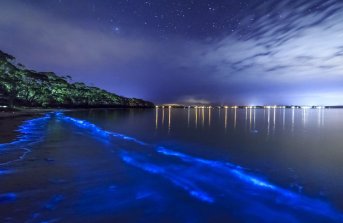
The Bioluminescent Mosquito Bay might not sound like all that but, it's one of tourist’s favourite experiences in Puerto Rico. During the day, Vieques Beach is your stereotypical Caribbean hideout — but at night the waters and sky emit a blue glow from the half-animal, half-plant microorganisms that live in every gallon of the bay water, and recent travellers have been wowed by how much visuals these microscopic creatures produce. But be careful of visiting the bay during a full moon; the microorganisms aren't as visible at that time. While you don't need a guide to accompany to the Mosquito Bay, most guests will recommend it. You can get tips on the best nights to visitant lunar calendar information, as well as details on eco-friendly tours. Nightly tours usually range between $35 and $55 per person.
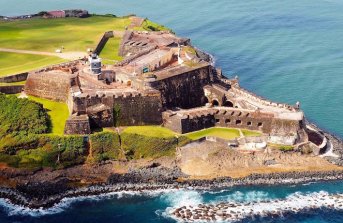
El Morro overhangs out of San Juan harbour signalling to cruise ships as it used to deter enemy attacks. The fortress is a hulking six-story structure that was built between 1539 and 1589, withstanding the two world wars and a few scrimmages, Now, El Fuerto San Felipe del Morro is the go-to tourist attraction in Puerto Rico, both for its breathtaking views of the Atlantic Ocean and extensive history. You can also tour the fort’s depths, which include a maze of tunnels, barracks and prison cells. El Morro is one of two forts located in San Juan National Historic Site Its sister, the Fort San Cristobal, is known as one of the largest Spanish fortresses in the Western Hemisphere. Both forts are open from 9 a.m to 6 p.m daily. Admission to enter the site is $5USD for adults and $3 for kids.
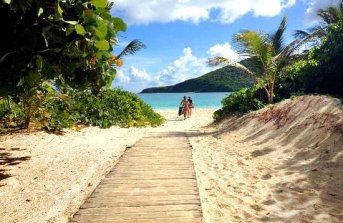
On the island of Culebra — which is situated about 20 miles east of Puerto Rico — visitors will find beaches perfect for swimmers, snorkellers and those looking fro a quiet spot that boasts beauty from nearly every angle. Flamenco Beach 1.5 mile stretch of sand is the most famous on Culebra and is often recognised by traveller and experts as the most scenic in Puerto Rico. Facilities such as bathrooms and showers can be found on location, and the beach’s white sand is filled with stalls selling refreshments or offering umbrellas and chairs for rent — all available at about $10USD each. Amenities and serenity are among the many charms of this lovely spot but above everything, visitors simply can't get enough of the beach’s glamour.
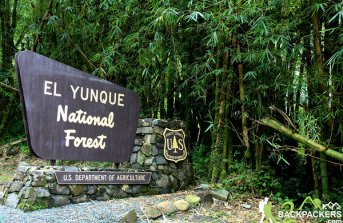
Often referred to as the Caribbean National Forest, the El Yunque National Forest or El Yunque, this lush and diverse expanse is the one and only tropical forest in the U.S National Forest System. It is also a particular favourite for vacationers who love nature and a good trek — but even if you are not a so big on nature, travellers will urge you to make the trip just 35 miles east of San Juan. Remember to wear clothes that can get wet — the site receives more than 100 billion gallons of rainfall annually — and pack a water-resistant camera to capture some of the area’s beauty. Keep your ears peeled in the evenings, when Puerto Rico's tiny coquí tree frogs begin their serenade. The forest has 13 well-identifiable hiking paths that differ in difficulty. The two most popular, La Mina & Big Trail, are a combined two-hour hike twists and turns by La Mina River and finishes around La Mina Falls. Visitors will agree that El Yunque is too much to tour in one day; many choose to camp or find accommodations in the area. You can obtain a free permit (before 3 p.m. each day) to camp on El Yunque's premises, but facilities are few and far between.
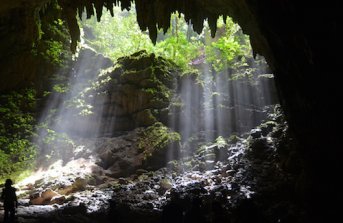
Parque de las Cavernas del Río Camuy has feature a massive cave system covering 268 acres and is thought to be third largest grotto system in the world. A trolley bus carries visitors to a 200-foot deep cavern, or sinkhole, which is now a protected area known as Cueva Clara Empalme. The caves also feature many different rooms, in some cases with high ceilings, stalactites, and stalagmites and rivers running along the base. An accompanied tour leads visitors through the Cueva Clara Empalme. In addition to the natural features of the caves system, it's also interesting to note that the caves were used by the indigenous population long ago. Located about 70 miles south-west of San Juan around the Arecibo area, the Parque de las Cavernas del Río Camuy is open Wednesdays through Sundays from 8:30 a.m. to 5 p.m. Tours of the caves cost $15 for adults and $10 for children ages 4 to 12. For information about transportation to and from the caves, visit the park's official website.
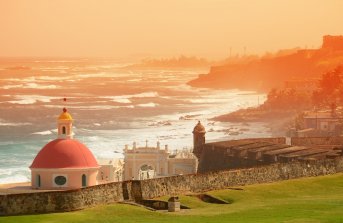
Strolling the streets of old San Juan, with its beautiful colonial buildings and imposing forts dramatic forts, it is like stepping back in time but with some modern upgrades. Old San Juan is more than five centuries old, and the second-oldest city in the Americas, it is a blend of restored 16th and 17th-century Spanish colonial buildings. Today, visitors can shop, dine or even board in some of these beautiful ancient buildings. The main attraction is in San Juan is El Morro Fort (Fuerte San Felipe del Morro) sticking out on a peninsula high above the Atlantic, just a quick walk from the centre of the city. Built in 1539, El Morro’s history, preservation and setting make it one of the top tourist attractions in the country. While there is a lot to do in Old San Juan, some of the standout attractions are Fortaleza; the Castillo de San Cristóbal (San Cristóbal Fort); and the San Juan Cathedral, which holds the tomb of Ponce de León.
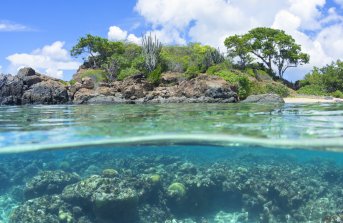
Though Culebra is often normally mentioned in the same breath as Vieques, this smaller island with elegant beaches and verdant hills has its own one-of-a-kind character. The pace here is slow and unbothered and the atmosphere laid back. Eco-tourism is big on the island, and many of the tourist's establishments are operated by expats. About 17 miles ears of Puerto Rico and 12 miles west of the Saint Thomas, Culebra is only three miles wide and seven miles long, with 23 offshore islands of its own. The area’s coral reefs are ranked as some of the best in the Caribbean. The horseshoe shaped Playa Flamenco is the most popular beach and is almost the perfect beach. Te water is crystal with little or no surf, making it the perfect spot for swimming or diving, and the sparkling white sand is lined with coconut palms. Isla de Culebra National Wildlife Refuge is a well-kept slice of nature that features the entire coastline of Culebra National Wildlife Refuge, which includes Cayo Luis Peña, a small just west of Culebra. Here, coves and bumpy landscapes make for some fascinating but challenging hiking opportunities.
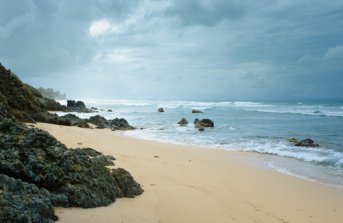
Vieques is located eight miles away from mainland Puerto Rico and has recently become a popular beach resort with small, 5-star resorts, shops, galleries and restaurants. With the US Army’s departure from the island in 2003, Vieques turned its focus to tourism. Spectacular beaches are now backed with quality tourism infrastructure that attracts both locals and tourists, who take the time of year, to getaway to this island paradise. There are no large resorts or tall buildings. At 21 miles long Vieques is the largest Spanish Virgin Islands but still offers that small island feel. The island is also home to a phenomenon at Mosquito Bay (also known as Bioluminescent Bay), where a large concentration of phosphorescent dinoflagellates light up movement in the water at night. Visitors can explore either by boat, canoe, or kayak after dark to experience this natural wonder. While there are some other areas in Puerto Rico where this phenomenon occurs, this is the best place to experience it. Vieques can be reached by air or ferry, with ferries leaving from Fajardo.